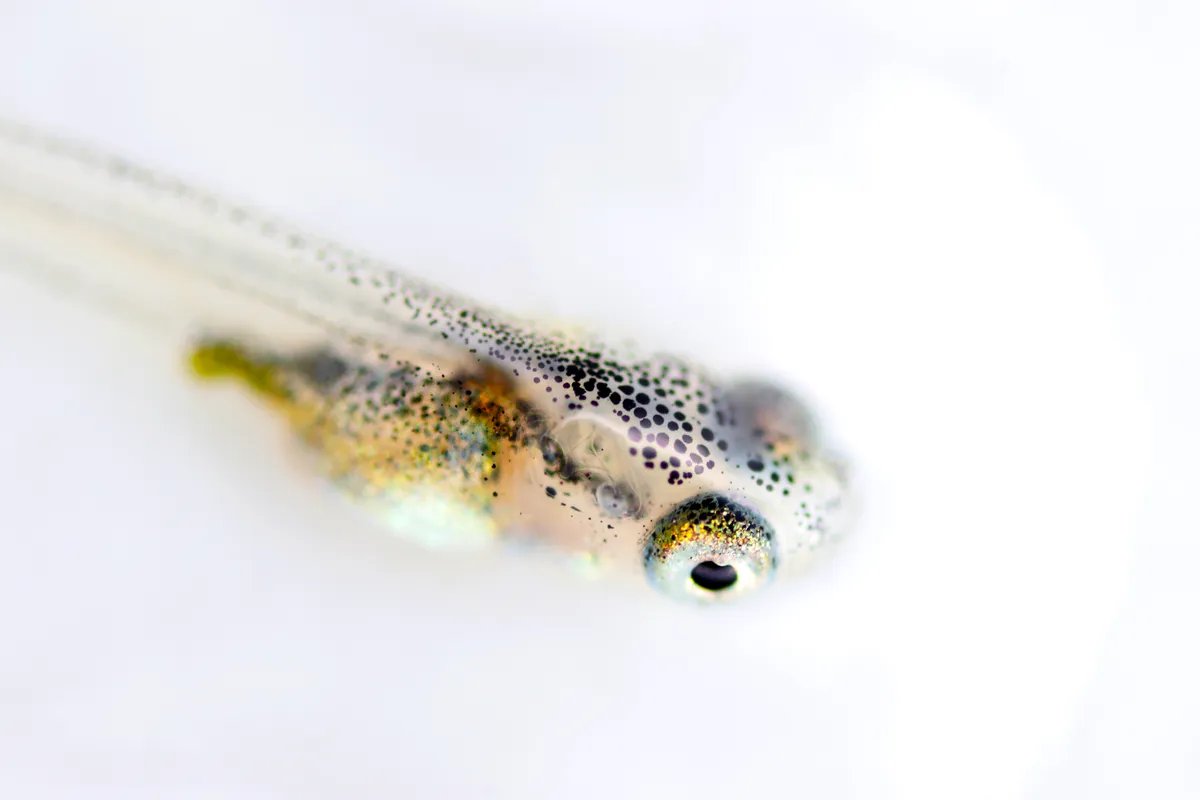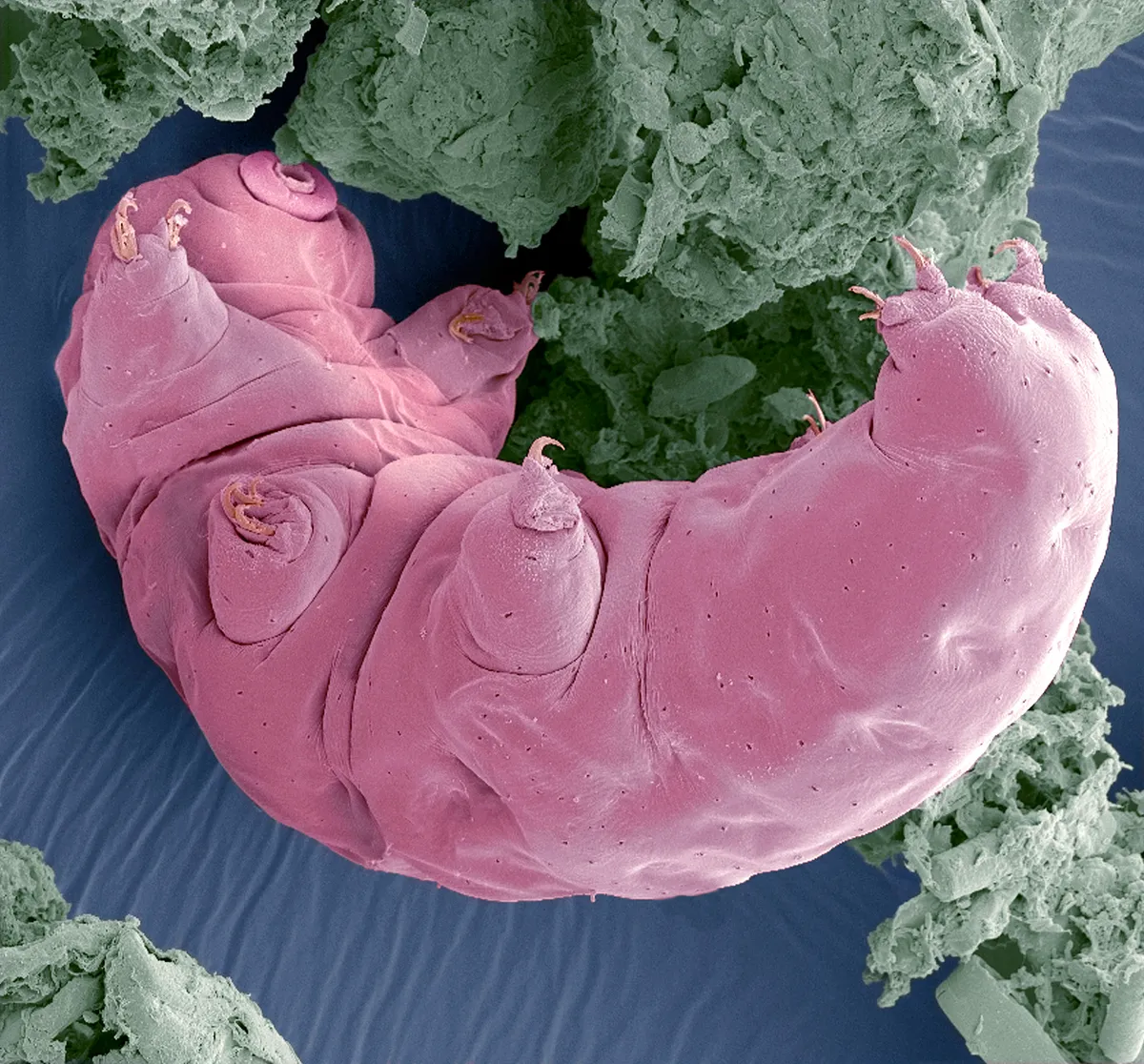In July 1969, Apollo 11 launched into space and Neil Armstrong and ‘Buzz’ Aldrin successfully performed the first crewed lunar landing.
Television images of the men taking humankind’s very first steps on the moon’s surface were broadcast into the homes of millions around the world. But there were many animals that paved the way to this momentous occasion, and many that furthered astronautical studies afterwards.
Meet the animals that have been into space...
What animals have been into space?
1
Fruit flies
The first animal in space was launched in 1947. And, perhaps surprisingly, it was the humble fruit fly. American scientists were trying to establish the impact that cosmic radiation might potentially have on astronauts in the future – they chose flies because they are genetically similar to humans.
A V-2 ballistic missile, recovered from the Nazis at the end of world war II, was loaded with the fruit flies and travelled 109km into the air – the distance at which space officially begins. On its descent back to Earth, a capsule containing the flies was parachuted down to New Mexico.
On opening the capsule, the scientists found the flies alive, with no evidence of the effects of radiation. It was the start of a long line of astronaut animals to come.
2
Monkeys and apes

Incredibly, 32 monkeys and apes have been to space, including the rhesus macaque, pig-tailed monkey, cynomolgus monkey, squirrel-tailed monkey and chimpanzee.
The very first was a rhesus macaque called Albert II. In 1949, he reached 134km, but died on impact when re-entering the Earth’s atmosphere due to a parachute failure.
He was preceded a year earlier by Albert I, who suffocated within his cramped capsule before it had even left the ground.
The first great ape in space was Ham, a chimpanzee launched into space by NASA on 31 January 1961. Ham returned safely to Earth, where he lived until 1983.
3
Mice

These rodents have long been used to find out more about how space travel will affect the human body. In fact, NASA has published a detailed study of mice housed at the International Space Station. It shows that mice quickly adapt to microgravity conditions.
The very first mouse went into space in 1950, reaching an altitude of 137km. However, unlike the fruit flies, the mouse died when the rocket disintegrated due to a parachute failure.
4
Dogs

A number of dogs have gone into space under the former Soviet Union. The most well-known was Laika in 1957. She was picked up off the streets as a stray mongrel puppy in Moscow and deemed suitable because of her gentle temperament. The scientists also believed a stray would be better at coping with adverse conditions.
Listen to this BBC World Service Witness History series episode about Laika.
Though other dogs had been launched into space before her, Laika is famous for being the first animal to orbit the Earth. However, she was never to return.
She was sent off with just one meal and a seven-day oxygen supply. The Soviet government claimed she survived for seven days. The reality: Laika overheated and died just five hours into the flight.
5
Tortoises
You might think that tortoises are the last animal to turn to in a race, but they played an important role in the Space Race, In 1968, the race was on between the USA and the Soviet Union to land a man on the moon. The Russians launched the Zond 5 spaceship with a capsule carrying samples of soil and seeds, some worms and two steppe tortoises.
The tortoises completed a circuit around the moon and, after six days, returned to Earth. Though the plan had been for Zond 5 to land in Kazakhstan, the capsule veered off course and was eventually retrieved from the Indian Ocean. Thankfully, the tortoises were still alive, though they had lost weight by 10 per cent.
6
Frogs

These amphibians have been helping make one great leap for mankind since 1959. However, the most significant frog flight came in 1970 when NASA launched the Orbiting Frog Olotith spacecraft (pictured), containing two bullfrogs.
The word ‘olotith’ refers to the frogs’ inner-ear balance mechanism and the experiment was designed to investigate the effect of space travel on motion sickness.
Electrodes were implanted into the frogs’ thoraxes and the vestibular system within the ear to record data on the effects of sustained weightlessness. The study found that after 6 days the frogs acclimatised and their vestibular system had returned to normal.
7
Spiders
After the success of the first manned mission to the moon in 1969, there was less emphasis on putting animals into space. However, scientists were still interested in studying the effects of microgravity on the biological functions of animals.
In 1973, two garden spiders, called Anita and Arabella, were used in an experiment to see if they could still spin webs in space. The experiment was the brain-child of Massachusetts high school student Judith Miles.
Both spiders managed to spin webs, even though the webs were slightly finer than on Earth. The study revealed a great deal about the effects of microgravity on motor response.
8
Fish
The first aquanauts to reach space were a type of minnow found in salt marshes – the mummichog – plus 50 eggs. It was 1973 and NASA was keen to observe the effects of microgravity on animals that moved three dimensionally on Earth.
The human astronauts suffered from space sickness, and likewise the fish swam in loops rather than straight lines. In a few days, both the astronauts and aquanauts had got their bearings.

More recently, in 2012, the Japanese space agency decided to send fish up to the International Space Station. Their aquarium had an automatic feeding system, a water circulation system, and LED lights to represent day and night.
The fish chosen to go up were medaka, which have transparent skin, making it easier for researchers to see what was going on inside the fish
The purpose of the experiment was to see how fish would respond to radiation impact, bone degradation and muscle wastage.
9
Tardigrades

In 2007, tardigrades were the first animals to survive outer space. Tardigrades, also known as water bears, are microscopic invertebrates able to deal with almost anything on Earth, so perhaps it’s no surprise.
Lack of oxygen, radiation, freezing cold, dehydration… nothing phases a tardigrade.
The tardigrades were dried out before the flight and then orbited the Earth outside a rocket for 10 days. When they were re-hydrated on their return to Earth, scientists discovered 68% had survived the extreme cold and space radiation.
10
Nematodes
In 2003, the Columbia space shuttle disintegrated when it re-entered the Earth’s atmosphere. Tragically, seven astronauts on board were killed.
There were 80 science experiments aboard the shuttle as well. Incredibly, when these were recovered from the wreckage, a live group of nematodes was found to have survived the extreme heat.
Now, nematodes (also called roundworms) are often used to study the impact of space travel on organisms.
Can any plants be grown in space?
The longest-studied plant in space is thale cress (Arabidopsis thaliana). It holds the Guinness World Record for being ‘the first plant to flower in space’, on board the Soviet Union’s Salyut-7 space station in 1982 (though there are claims of earlier flowerings in orbit).
Thale cress is a tiny flowering plant with a 40-day life-cycle, making it perfect for research. It is still used in experiments on the International Space Station, where recent research has focused on which light wavelengths can optimise growth and which plants can best withstand long-duration spaceflight.
Plants respond to gravity at a cellular level, so many experiments have focused on the effects of micro (weak) gravity. Space plants are grown in special chambers in which temperature, humidity, nutrients, water, oxygen, CO2 and light wavelengths can be controlled and manipulated. Centrifuges are also used to simulate micro-gravity conditions. Other plants grown in space include romaine lettuce, courgette, sunflower, broccoli and wheat.
Main image: Belka and Strelka, Russian cosmonaut dogs, 1960. © Fine Art Images/Heritage Images/Getty Images